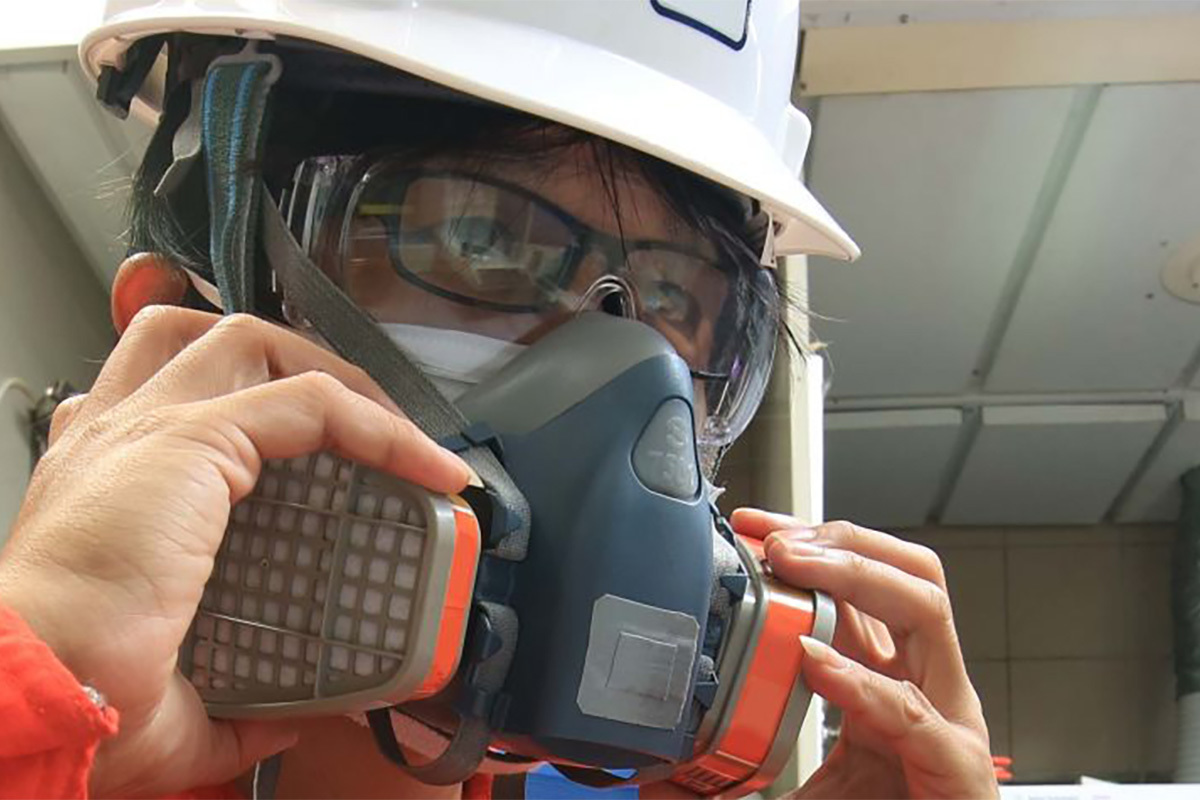EHS Topic of the Month: Respirators & Respirator Programs
Respirators and Respirator Programs
 From OSHA regulation 29 CFR 1910.134: "A respirator shall be provided to each employee when such equipment is necessary to protect the health of employees. The employer shall provide the respirators which are applicable and suitable for the purpose intended. The employer shall be responsible for the establishment and maintenance of a respiratory protection program."
From OSHA regulation 29 CFR 1910.134: "A respirator shall be provided to each employee when such equipment is necessary to protect the health of employees. The employer shall provide the respirators which are applicable and suitable for the purpose intended. The employer shall be responsible for the establishment and maintenance of a respiratory protection program."
EXEMPTION: Employers are not required to include in a written respiratory protection program those employees whose only use of respirators involves the voluntary use of filtering facepieces.
What is a Dust Mask? A filtering facepiece (dust mask) means a negative pressure particulate respirator with a filter as an integral part of the facepiece or with the entire facepiece composed of the filtering medium.
Employees who wear tight-fitting respirators must have annual fit tests and do a fit check whenever they put on a respirator. The individual who uses a tight-fitting respirator is to perform a user seal check to ensure that an adequate seal is achieved each time the respirator is put on. Either positive or negative pressure checks, or the respirator manufacturer’s recommended user seal check method shall be used. User seal checks are not substitutes for qualitative or quantitative fit tests. Be sure that employees know how to do a daily fit check and that all respirator users are included in the annual fit test!
How are respirators selected? The employer shall provide the respirators which are applicable to and suitable for the purpose intended. This means selection must be based upon the air contaminants present and the level of the contaminant (requires air sampling).
If you require respirators, be sure...
- You have a WRITTEN program that includes all persons and occupations.
- All included workers have completed the medical questionnaire (this MUST be the OSHA questionnaire, which can not be modified).
- Any additional required medical tests have been offered (tests recommended by the medical professional who reviews the questionnaire).
- Respirators have been properly selected. The selection MUST be based on air sampling test results.
- Everyone in the program has been trained in the hazards associated with the chemical of concern and required aspects of the Hazard Communication Program, the Respirator Program, and any other pertinent program (PPE, Lead, Silica, Cadmium, etc.).
- Fit tests are done annually for those in the program.
- You have a program in place to periodically check that respirators are being worn and properly maintained.
- Men are clean shaven if using negative pressure respirators.
- Respirators are being properly stored at breaks, lunch and after shifts.
- Multiple-use respirators are properly maintained and cleaned, and filters changed when needed.
- Your program includes ALL the necessary sections from the NFFS Respiratory Protection Program.
Remember...NFFS has a Respiratory Protection Program template available for your use, which includes guidance on all of the above requirements at: www.nffs.org/osha-templates.
